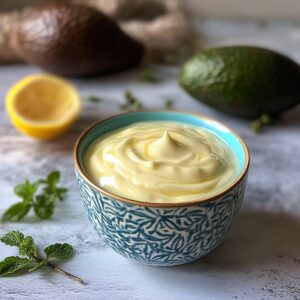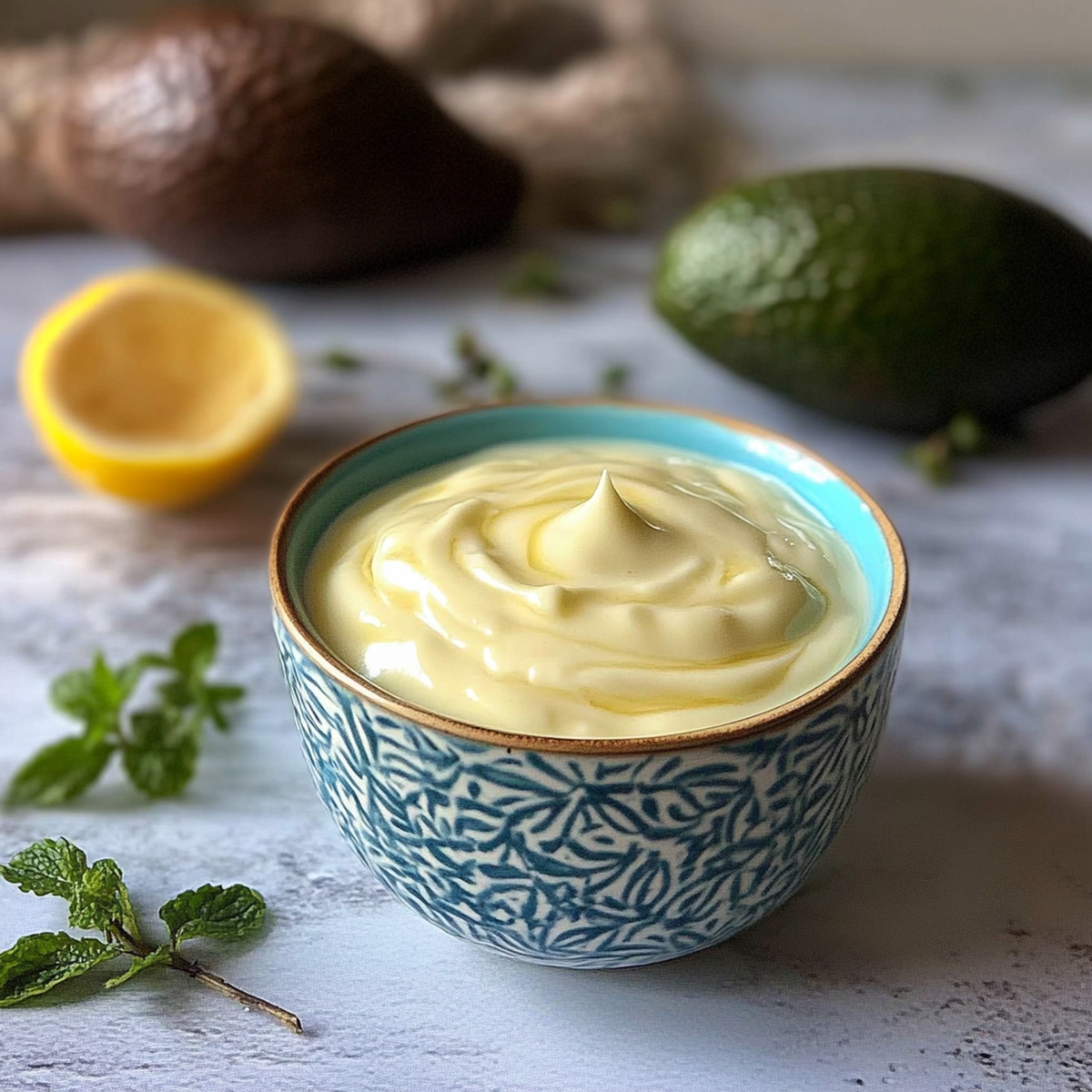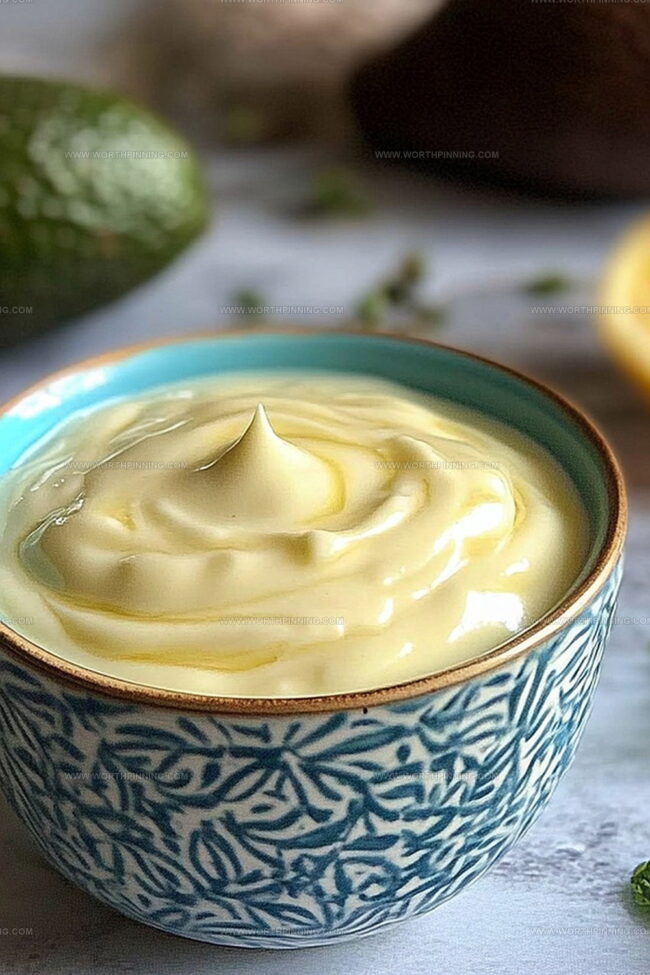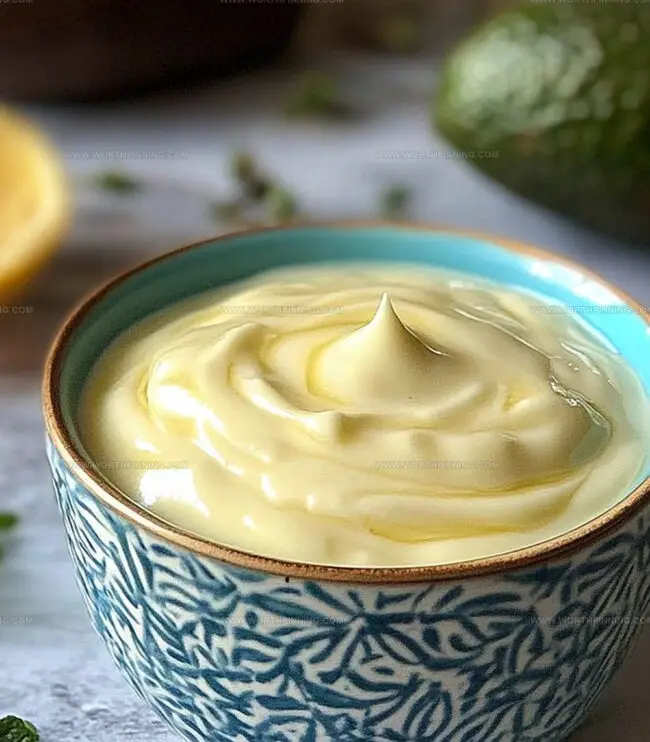Quick & Tangy Easy Homemade Mayonnaise Recipe with Avocado Oil
Whipping up a creamy homemade mayonnaise using avocado oil brings incredible flavor to your kitchen adventures.
Smooth and silky textures come together with just a few simple ingredients.
Professional chefs know this trick for creating restaurant-quality condiments at home.
My favorite technique involves whisking ingredients slowly to achieve perfect emulsification.
Small batches ensure maximum freshness and control over taste profiles.
Quick blending creates a rich, velvety spread that outshines store-bought versions.
Start experimenting and watch your culinary confidence soar!
What Makes This Avocado Oil Mayo Stand Out
Avocado Oil Mayo Ingredient Notes
Base Ingredients:Oil Component:Optional Flavor Enhancers:How to Whip Up Avocado Oil Mayo
Step 1: Prepare Blending Base
Add egg, lemon juice, mustard, and salt into a tall jar or container that comfortably fits an immersion blender. The container’s height will help with smooth blending.
Step 2: Add Oil Carefully
Pour avocado oil gently on top of the other ingredients. Do not stir or shake the mixture yet.
Step 3: Start Blending
Position the immersion blender at the bottom of the jar, ensuring it touches the egg mixture. Turn on the blender and hold it steady.
Step 4: Create Emulsion
Blend continuously for 15-20 seconds without moving the blender. Watch as the ingredients start to combine and thicken.
Step 5: Lift and Smooth
Slowly raise the blender upward as the mayonnaise develops a creamy consistency. Continue blending until you achieve a smooth, rich texture.
Step 6: Taste and Adjust
Sample the mayonnaise and season as needed. For extra zesty flavor, add a splash of vinegar.
Step 7: Store Properly
Transfer the mayonnaise to an airtight container. Refrigerate and consume within one week for optimal freshness and taste.
Handy Tips for Perfecting Avocado Oil Mayo
Store and Use Avocado Oil Mayo the Right Way
Foods That Go Great with Avocado Oil Mayo
Mix-In Ideas for Avocado Oil Mayo
Mayo with Avocado Oil Q&A
Avocado oil offers a neutral flavor and healthy monounsaturated fats, making it an excellent choice for homemade mayo. It provides a smoother texture and contains beneficial nutrients compared to traditional vegetable oils.
While an immersion blender is recommended for best results, you can use a standard blender. Just add ingredients carefully and blend at low speed to prevent separation. The key is to add oil slowly and maintain a consistent emulsification process.
Ensure all ingredients are at room temperature, add oil very slowly, and start blending at the bottom of the container. Use fresh eggs and maintain a steady blending technique to create a stable emulsion that won’t separate.
Use fresh, pasteurized eggs to reduce risks. If concerned about raw eggs, you can use pasteurized egg products or briefly heat the egg to 160°F before blending to eliminate potential bacterial concerns.
Print
Easy Homemade Mayonnaise Recipe with Avocado Oil Recipe
- Total Time: 10 minutes
- Yield: 8 1x
Description
Creamy homemade mayonnaise whisks together silky avocado oil and fresh eggs for a luxurious condiment that elevates sandwiches and salads. Luscious, tangy, and smooth, this simple recipe brings gourmet flavor to your kitchen with minimal effort.
Ingredients
Main Ingredients:
- 1 large egg (room temperature)
- 1 cup avocado oil
Flavor Enhancers:
- 1 tablespoon (15 milliliters) lemon juice (freshly squeezed)
- 1 teaspoon (5 milliliters) Dijon mustard
- ¼ teaspoon (1.25 milliliters) salt
Optional Ingredient:
- ½ teaspoon (2.5 milliliters) white vinegar (for a tangier flavor)
Instructions
- Combine egg, lemon juice, mustard, and salt in a tall, narrow container compatible with an immersion blender.
- Gently pour avocado oil on top without disturbing the underlying ingredients, ensuring a clean layering.
- Position the immersion blender directly at the bottom of the container, ensuring full contact with the base ingredients.
- Activate the blender and maintain a stationary position for 15-20 seconds, allowing initial emulsification to occur naturally.
- As the mixture begins to thicken and transform, gradually elevate the blender in a smooth, controlled motion.
- Continue blending until the texture becomes uniformly creamy and reaches a consistent, silky consistency.
- Sample the mayonnaise and fine-tune the flavor profile by adding a splash of vinegar for enhanced tanginess or adjusting seasonings to personal preference.
- Transfer the freshly prepared mayonnaise to a sealed container and refrigerate, ensuring optimal freshness for up to one week.
Notes
- Choose fresh, high-quality eggs at room temperature for the smoothest emulsification and best flavor profile.
- Use an immersion blender directly at the bottom of the jar to create a stable, creamy mayonnaise without separation.
- Experiment with different oils like olive or walnut for unique flavor variations while maintaining the same blending technique.
- Opt for pasteurized eggs if concerned about raw egg safety, especially for pregnant women, children, or those with compromised immune systems.
- Prep Time: 10 minutes
- Cook Time: 0 minutes
- Category: Snacks, Lunch, Dinner
- Method: Blending
- Cuisine: American
Nutrition
- Serving Size: 8
- Calories: 300
- Sugar: 10g
- Sodium: 150mg
- Fat: 18g
- Saturated Fat: 11g
- Unsaturated Fat: 7g
- Trans Fat: 0g
- Carbohydrates: 30g
- Fiber: 1g
- Protein: 4g
- Cholesterol: 40mg




Ethan Miller
Founder & Lead Content Writer
Expertise
Education
Portland Community College
Culinary Institute of the Pacific
Ethan’s culinary journey began in his grandmother’s kitchen, where he first learned to play with flavors and ingredients. With formal training in culinary arts and a deep love for international cuisines, Ethan’s goal is to share the joy of cooking with others.
He believes food is all about creativity and bringing people together, one meal at a time. When he’s not experimenting with new dishes, he enjoys hiking in the Oregon wilderness and discovering fresh, local ingredients.